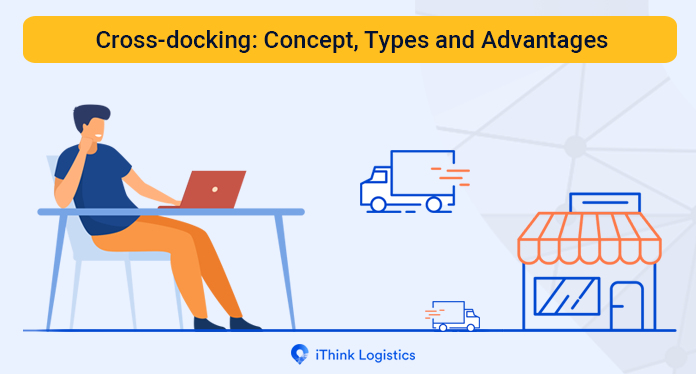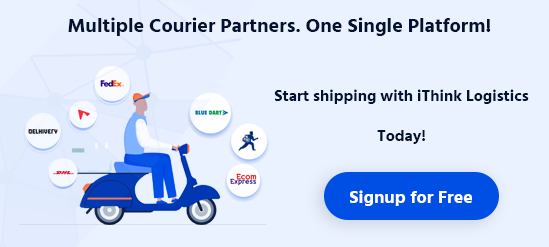If you have landed on this blog, you were probably looking for ways to reduce logistics costs and came across a word called “cross-docking”.
Cross-docking has become quite a famous procedure in the supply chain industry.
Today we will talk about specific techniques and cross-docking examples, and how it holds advantages for the logistics sector.
If you want to know how it can affect your eCommerce business, keep reading till the end.
Overview
Speed and efficiency remain the primary area of focus in the supply chain industry. With more new e-commerce businesses getting established every day, it has become important for logistics to keep up with the increasing order flow.
Even though advancement in technology has enhanced inventory efficiency, it still lags in many areas.
Different logistics are trying to follow the cross-docking method to reduce the inventory cost, which causes less capital to be tied up in the inventory.
That means the product will reach the end-user directly from the seller’s hub, without being stored in any warehouse. Cross-docking provides a transport-optimised solution that provides an effective cost-saving solution for any company.
Without cross-docking
Without a cross-docking system, the products are stored in warehouses and are not passed via distribution centres. Take a look at the picture given below.
Types of Cross-docking
What makes cross-docking exceptional? It is the reduced warehouse cost and increased efficiency in the delivery workflow.
This process can be divided into two types:
- Pre distribution Cross-docking
- Post Distribution Cross-docking
Pre Distribution Cross-docking
With Pre-Distribution, products are unloaded, arranged, and repacked as indicated by pre-decided distribution directions. The customers are listed down at the end of the day before the products leave the seller’s hub.
Post-Distribution Cross-docking
In the Post-Distribution cross-docking, the arranging of products is kept on hold until the customers are listed down. That implies that the products are kept in the distribution centre for a longer amount of time. The process helps the sellers make smarter and informed decisions regarding shipping, inventory, sales forecast and trends.
Why is cross-docking used?
Cross-docking is mainly applicable for the products that are always in high demand and hence shipped in high volume. The fast-moving products are highly benefited by Cross-docking, as they need significantly less storage time.
Cross-docking is known for boosting warehouse efficiency. Even though it is not for all business models, it can prove highly transformative for some.
Advantages of Cross Docking
Cross-docking holds quite a several advantages for business, and some of the major ones are listed below.
Easy material handling
Material handling becomes a lot easier and smooth. Cross-docking increases operational efficiency, and highly improves productivity. It also allows better functioning for in-motion labelling and weighing, label verification, destination scan, etc.
No warehouse requirement
Warehouses are often replaced by cross-dock office, which is simpler to build and requires less area. Henceforth, it gives both variables and fixed resource cost investment funds for an organisation. When utilising a 3PL for cross-docking, especially for a startup, most often go for the dedicated cross-dock distribution centre.
Reduces the packaging and storage cost
Since the products are stored for significantly less time, the inventory and storage cost reduces significantly.
Reduced transportation and distribution cost
Since all products are shipped to be dropped off at the endpoint, the trucks don’t need to make multiple halts. This drives down the transportation cost altogether. The trucks are fully loaded, and all the products going in the same direction are shipped together. Lesser fuel is wasted due to minimised miles and thus brings down the total transport and distribution cost.
Efficient Product Screening
Products will be screened more efficiently with the application of streamlining and automation at the terminals, and this can significantly be reduced the time parcel spend in shipment.
Faster product delivery
As a positive side effect of the efficient screening measure, there will be a high turnover of things which suggests that products would now have the option to be delivered faster to the customer.
Fewer Risks for Inventory Handling
Since a warehouse is not needed, the risk of inventory handling is shallow. Products are much safer and don’t have the risk of getting stolen or damaged from the warehouse.
Less expensive
Cross-docking terminals are much less expensive to set up than a building or to lend an average warehouse.
Reduced labour cost
Since there is no warehouse involved, the number of labours for product handling is also reduced. This brings down the overall labour and shipment cost.
What type of products is suitable for Cross-docking?
Cross-docking is highly beneficial for natural and fresh products, crowdfunding fulfilment and high demand products. Take a look at the detailed explanation below.
Inventory of perishable items
Cross-docking is helpful for perishable items. The products that follow the First out or last in first out can use Cross-docking for their business. For example, the products like fresh foods (milk, fish and meat) are delivered first. The non-perishable items like biscuits, soaps and packaged products are delivered last.
Products with high demand
Certain items like phones and clothes (especially during sales and offers) are always in high demand and go through significantly less storage time. These products can be included in the Cross-docking business model. This can effectively reduce costs. But make sure you analyse the accurate data before going forward.
E-commerce flash sales
The eCommerce platforms that run black Friday or the clearance sale campaign often receive a massive order fulfilment to cater to. Cross-docking is useful for such a situation when you need to deliver faster with a reduced cost.
Risk of Cross-docking
A lot of attention, consideration, time and arranging are essential to make Cross-docking work viably.
Setting up the Cross-docking terminal constructions would take a considerable amount of time and funding, to begin with.
A few providers would not have the option to deliver client-ready items to the Cross-docking terminal.
An adequate number of transporters are needed for the Cross-docking warehouse to run efficiently. Hence the whole process depends on trucks.
A high volume of an item that is stored needs to be cost-effective.
Understanding the advantages and disadvantages of cross-docking and identifying how they fit with your business or organ essentials is important. It is a significant factor for assessing and increasing productivity in the network cycle.
So make sure you comprehend these critical factors. For instance: High Volume products, fast selling items, and Perishable goods are a perfect fit for Cross-Docking.
Conclusion
Cross-docking provides a transport-optimised solution that provides an effective cost-saving solution for any company. We hope this blog has enlightened you with the necessary information that you might require. Have you ever tried Cross-docking? Are you planning to do so?
Don’t forget to share your experience and thoughts in the comment section below.










